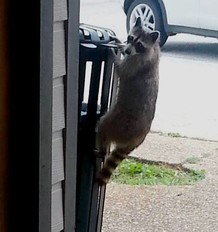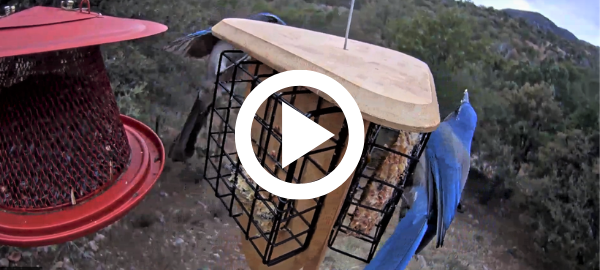
It's that time of year when raccoons or squirrels may take up residence in your attic. Here are 3 things you can do to persuade them to leave:
- Put lights with high wattage bulbs in the attic, and leave them on for 3 nights.
- Soak rags in ammonia OR vinegar, and scatter them in the attic.
- Put a radio in the attic, and play loud music for at least a few hours day and night.
It's very possible your attic resident is there to have babies. Once you're sure the animal and its young have moved out, close up their attic entry holes. If you don't, another animal will move in. Texas Wildlife Rehabilitation Coalition has more tips for dealing with attic animals.
|

Bird Live Cams & a Special Event
 While our migrating hummingbirds are wintering in sunny places farther south, the West Texas Hummingbird Cam feeders are switched to suet and seed feeders. The cam stays on, so take the opportunity to observe the variety of birds in West Texas, including the Woodhouse's scrub-jay (formerly the Western scrub-jay), seen in the picture.
Austin's resident peregrine falcon has a live cam on her nest box, which she frequents from February through early summer. This falcon typically lays 3 or more eggs in early March. Watch to see if they hatch this year!
Now's the time to sign up for the Great Texas Birding Classic, the biggest, wildest birdwatching tournament in the U.S.A. Gather your team, register, go birding and have fun – it's that simple! Registration closes April 1, and registration fees go to conservation projects chosen by the winners.
Texas Pterosaur is the largest known flying animal to have ever lived, and its fossil was found in Big Bend. More proof that everything’s bigger in Texas!
|